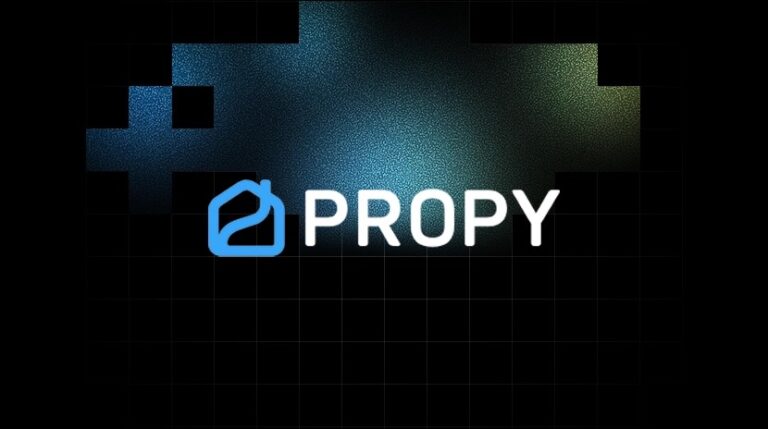Why Montana’s Blockchain Legislation Changes Everything (Not Just Real Estate)


The real estate industry is undergoing a significant transformation, with blockchain technology at the forefront. If you’ve ever wished for property transactions to be faster, more transparent, and cost-effective, you’re not alone. This shift has been gaining momentum since the advent of Bitcoin, with companies like Propy and Realiste leading the way.
I’ve been following blockchain developments for the past two years, particularly how they’re reshaping real estate through platforms like Propy (through whom I am crypto-certified). But Montana has now passed legislation that reveals this goes far beyond property transactions and is moving faster than most realize. And no, I am not talking about Artificial Intelligence, I am talking about Blockchain.
These two bills – SB 330 and SB 265 – which received very little national attention just positioned Montana as a testing ground for a much bigger question: Which economic infrastructure will handle your major life transactions in the future?
I’m still learning about the implications myself, but what I’m seeing suggests we’re all making choices that will impact our our economic future more than we realize.

First, What Is Blockchain?
At its core, blockchain is a decentralized digital ledger that records transactions in a secure, chronological, and immutable manner. Unlike traditional systems that rely on a central authority (like a bank or title company) to verify ownership, handle paperwork, or transfer property, blockchain enables the exchange of property rights (of all types) through technology. The beauty of blockchain is that this is done peer to peer and it is based on clear rules (protocols) rather than fallible people. Kind of like venmo but with a totally different (and much better) infrastructure.
By “peer-to-peer I mean I can have a digital wallet that holds my currency and my assets in the form of “tokens.” If I want to send money or transfer my assets to you, I don’t need the permission or intervention of a third party like a bank or a broker. I can simply send my tokens directly to your wallet. So imagine that for a minute… Let’s say you have done the necessary due diligence and you decide want to buy my house. If I want to sell you my home and I have it ” Tokenized” meaning all of the ownership documents related to my house and held in a token on a blockchain. I can send you that token, and you can send me the payment – all through our digital wallets – the home sale can be complete in a matter of minutes.
Every transaction is “verified” by software that is run on a network of computers, known as “nodes.” Each node holds a copy of the entire system eliminating the need for intermediaries prone to errors. This results in:
- Reduced fraud
- Lower costs
- Faster processing
- Permanent, tamper-proof records as the way blockchain works ensures this.
Additionally, blockchain’s transparency allows all parties to see every step of a transaction, including any changes made, who made them, and a timestamp of when.
Blockchain became popular with the advent of Bitcoin but it was first proposed in 1982 by David Chaum, a doctoral candidate at the University of California. Developments in cryptography in the early 90’s ultimately led to the the first decentralized blockchain conceptualized by Satoshi Nakomoto which forms the basis of the Bitcoin Network.
Today there are various type of blockchains with different “protocols” that govern the rules in which they operate. The “Ethereum” blockchain for example, whose native token is “Ether” or “ETH” is a blockchain that allows applications to be built upon it also known as “Dapps” or “Decentralized applications.” Propy is an example of one of these Dapps Propy, you can turn your property into an NFT and sell it on the blockchain, or simply use Propy’s system to transact in crypto. Propy Title and Escrow is currently licensed in Florida, Colorado, and Arizona and are projected to gain licenses in 18 more states within a a year. At this point they have exceeded $8B in real estate sales.
The Three Systems Taking Shape
Let me share what I’ve observed through my real estate blockchain education, because it applies to much more than property:
Traditional System: (TradFi) Whether you’re buying a house, starting a business, or making any major transaction, you go through banks, get government approvals, work with licensed intermediaries, and trust that institutions handle everything correctly. Every step requires permission from centralized authorities.
Decentralized System: (DeFi) You hold your assets in self-custody, execute transactions through smart contracts, and settle directly with few to zero intermediaries. Everything is cryptographically verified and permanently recorded on networks no single entity technically controls. I say “technically” because when you dive deeper into the consensus mechanisms of blockchain you can see that some are more ” decentralized” than others. If you are a lover of freedom and autonomy, you ideally want a “Proof of Work” consensus mechanism… I will cover this more in a future post.
Hybrid System: You blend traditional legal protections with blockchain efficiency. This is what platforms like Propy are pioneering – legal ownership transfers traditionally, but coordination and payments happen “on-chain.”
What’s fascinating about Montana’s new laws is they create frameworks for all three approaches rather than picking winners. Blockchain laws are still evolving so this transformation is not complete. Blockchain records at this point are not admissible in all states but that is changing and it is just a matter of time until blockchain records are mainstream.
What I Learned from Real Estate Blockchain
Working with Propy has opened my eyes to how these systems actually work in practice. When you buy property through blockchain platforms, you’re not just using new technology – you’re participating in a fundamentally different economic structure.
Traditional real estate requires banks to approve your financing, title companies to verify ownership, governments to record deeds, and multiple intermediaries who can delay or complicate your transaction. With tokenized real estate, the due diligence period occurs and then you bid for the home in an auction- like manner. Once the homeowner chooses a buyers contract to deal with, asmart contract can transfer ownership peer-to-peer (buyer’s digital wallet to seller’s digital wallet), settle instantly, and create permanent records that no single entity can manipulate.
But here’s what I’m realizing: this same pattern applies everywhere.
The Bigger Picture
SB 265 does something remarkable: Montana explicitly prohibits government use of Central Bank Digital Currencies while creating legal pathways for decentralized digital assets. They are paving the way to build toward this economic infrastructure.
Most of us don’t realize we’re making this choice every day. When we accept “convenient” services that require institutional permission, we’re voting for centralized control. When we learn about self-custody tools and peer-to-peer systems, we’re voting for personal sovereignty.
This applies to:
- How we store and transfer money
- How we prove our identity and credentials
- How we buy and sell assets from real estate to art, collectibles, etc…
- How we participate in governance and decision-making

What I’m Still Figuring Out
I am not claiming to be an expert on all the technical details – I’m learning alongside everyone else. But through my real estate blockchain experience, I’ve started to see patterns:
Proof of Work systems (like Bitcoin): Truly decentralized. No single entity can control the network.
Proof of Stake systems (like Ethereum): More efficient, but whoever holds the most tokens can potentially influences the rules. It’s like an HOA where one resident that owns multiple lots has the most power to sway every vote.
Private blockchains: Fast and efficient, but controlled by single entities. You get the technological benefits without the decentralization.
The implications are vastly different, and I’m still working out which approaches make sense for different situations.
Why This Matters to All of Us
Through platforms like Propy, I’ve seen how blockchain can make complex transactions more transparent and efficient. But Montana’s legislation made me realize this isn’t just about real estate or even just about technology.
We’re choosing between systems where:
- Traditional approach: Banks, regulators, and institutions control the infrastructure
- Decentralized approach: Network participants and mathematical consensus control the infrastructure. “Something called Post Labor Economics” also expands on the possibilities of this system in an AI world.
- Corporate approach: Whatever company controls the private network calls the shots
Most places are drifting toward whichever system is most convenient for existing institutions. Montana is intentionally creating space for alternatives.
What I’m Learning to Watch For
The blockchain revolution isn’t coming – it’s here. The question isn’t whether this transformation happens, but whether we understand it enough to make intentional choices about which systems we want to participate in.
Every major transaction will become a vote for which economic future we aren building.
Some of us will choose systems that preserve individual sovereignty. Others will choose systems optimized for convenience, mass data collection and institutional control. Many will choose accidentally based on whatever’s most convenient at the moment and that is what I want to help avoid. If you are going to choose, at least do not choose blindly.
Montana just showed us what intentional choosing looks like.
I’m curious what others are seeing in their industries. Are you noticing similar patterns in your field? What economic infrastructure are you – consciously or unconsciously – helping to build?
I’d love to hear from others navigating these changes. What are you learning about these emerging systems? Where are you seeing the biggest shifts in your industry?







